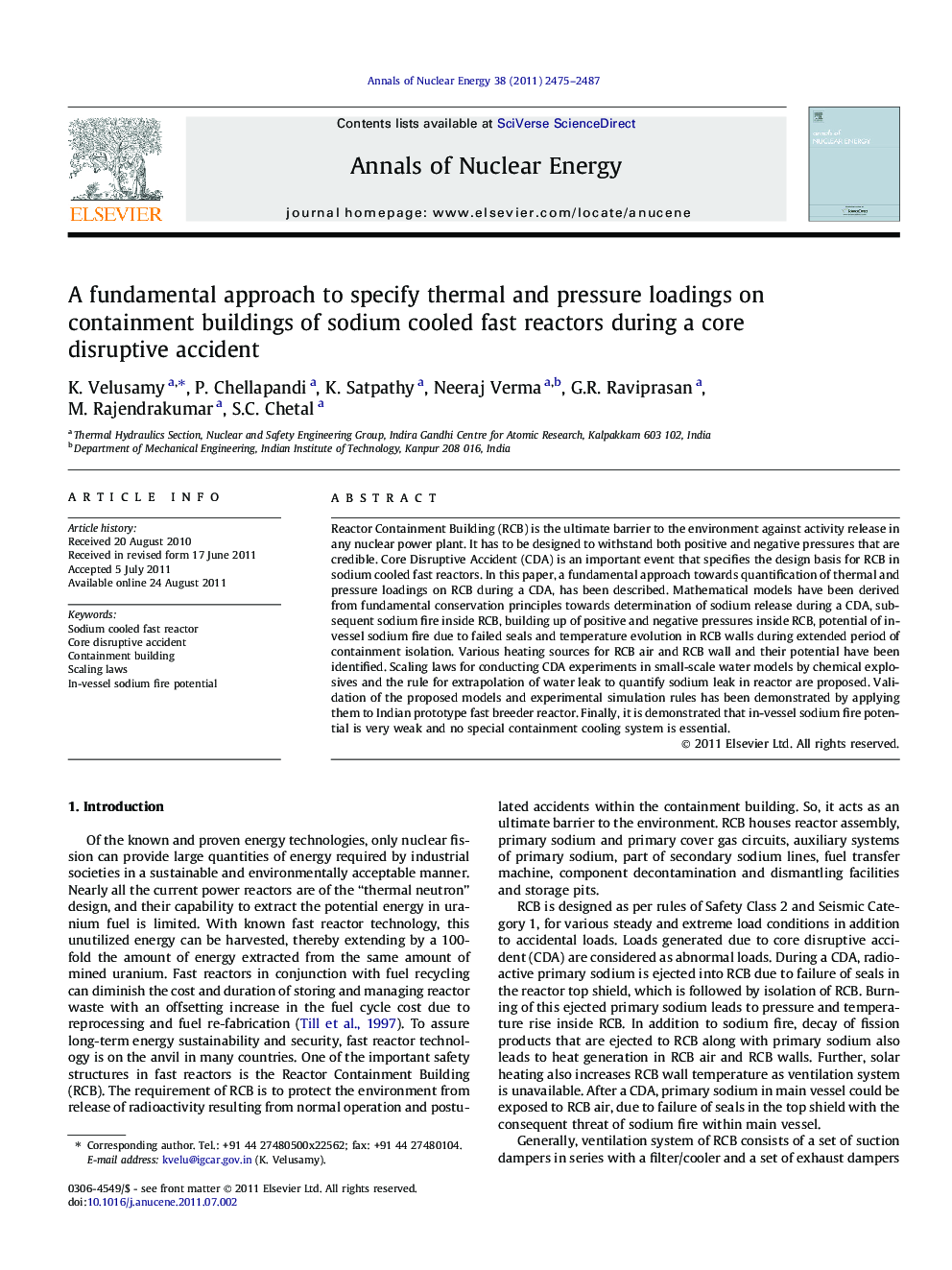| Article ID | Journal | Published Year | Pages | File Type |
|---|---|---|---|---|
| 1729179 | Annals of Nuclear Energy | 2011 | 13 Pages |
Reactor Containment Building (RCB) is the ultimate barrier to the environment against activity release in any nuclear power plant. It has to be designed to withstand both positive and negative pressures that are credible. Core Disruptive Accident (CDA) is an important event that specifies the design basis for RCB in sodium cooled fast reactors. In this paper, a fundamental approach towards quantification of thermal and pressure loadings on RCB during a CDA, has been described. Mathematical models have been derived from fundamental conservation principles towards determination of sodium release during a CDA, subsequent sodium fire inside RCB, building up of positive and negative pressures inside RCB, potential of in-vessel sodium fire due to failed seals and temperature evolution in RCB walls during extended period of containment isolation. Various heating sources for RCB air and RCB wall and their potential have been identified. Scaling laws for conducting CDA experiments in small-scale water models by chemical explosives and the rule for extrapolation of water leak to quantify sodium leak in reactor are proposed. Validation of the proposed models and experimental simulation rules has been demonstrated by applying them to Indian prototype fast breeder reactor. Finally, it is demonstrated that in-vessel sodium fire potential is very weak and no special containment cooling system is essential.
► An approach to quantify thermal and pressure loadings on RCB is presented. ► Scaling laws to determine sodium release from water experiments are proposed. ► Potential of in-vessel sodium fire after a CDA is assessed. ► The proposed approach is applied to Indian Prototype Fast Breeder Reactor.
